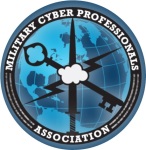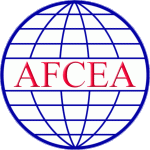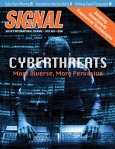A few weeks ago I profiled AFCEA, a military cyber organization that has been around for 70 years. Today, I will discuss an organization more recently formed and already having a significant impact, the Military Cyber Professionals Association (MCPA). The non-profit MCPA was founded by U.S. Army Major Joe Billingsley in 2013 while a graduate student in Cyber Systems and Operations at the Naval Postgraduate School (related thesis here). With cyberspace as a national asset, his idea for an organization dedicated to developing the American military cyber profession quickly garnered the attention of senior Department of Defense officials and military leaders. You can hear Joe discuss the MCPA in this short video.
In addition to developing the American military cyber profession, MCPA’s mission includes investing in our nation’s future through science, technology, engineering, and mathematics (STEM) education. MCPA accomplishes its mission in several ways and already has several chapters across the U.S. including in Alaska and Hawaii and is continuing to expand.
MCPA has established multiple publications already. In 2015, they started Military Cyber Affairs, a peer-reviewed scholarly journal published biannually. Volume 1, Issue 1 includes an article by Admiral Michael Rogers, Commander, U.S. Cyber Command; Director, National Security Agency; Chief, Central Security Service. MCPA also published its first issue of its magazine, the simply titled Cyber, in the fall of 2015.
Beyond its publications, MCPA hosts or sponsors a number of cyber-related events. It recently hosted the 2016 Joint Cyber Challenge (JCC), an annual Department of Defense 32-hour capture-the-flag (CTF) event. Other MCPA resources include the Key Cyber Issue List (KCIL), which supports cyber research topics; a mentoring program; recognition programs for its members, including the Order of Thor (yes, named after that Thor, which is kinda cool); and many more resources. The number of resources already firmly established or being grown is impressive considering MCPA’s young age.
While many of their resources are public, I encourage you to further check out the website and considering joining MCPA, if for no other reason than for the great networking available. Membership is free for most U.S. government employees and honorably discharged veterans. Not only join, but take advantage of opportunities to contribute, whether it is volunteering for a leadership role, submitting articles to the publications, or something else.

“The MCPA will bond cyber warriors worldwide and increase the strength of our profession.”
– LTG Rhett Hernandez, U.S. Army (retired), First Commander of Army Cyber Command
 Formed in 1946, the
Formed in 1946, the  One of the AFCEA resources I use most is its
One of the AFCEA resources I use most is its